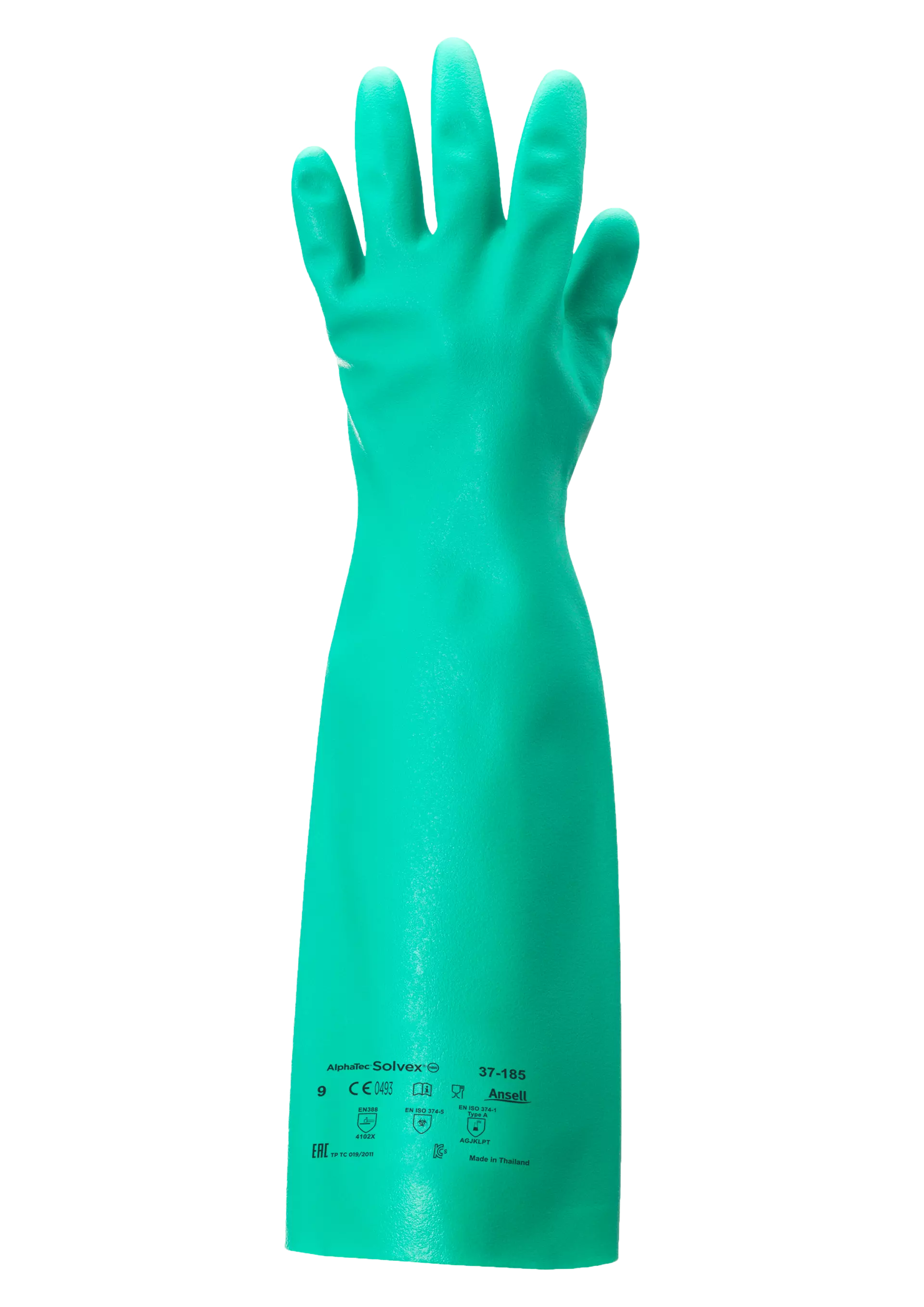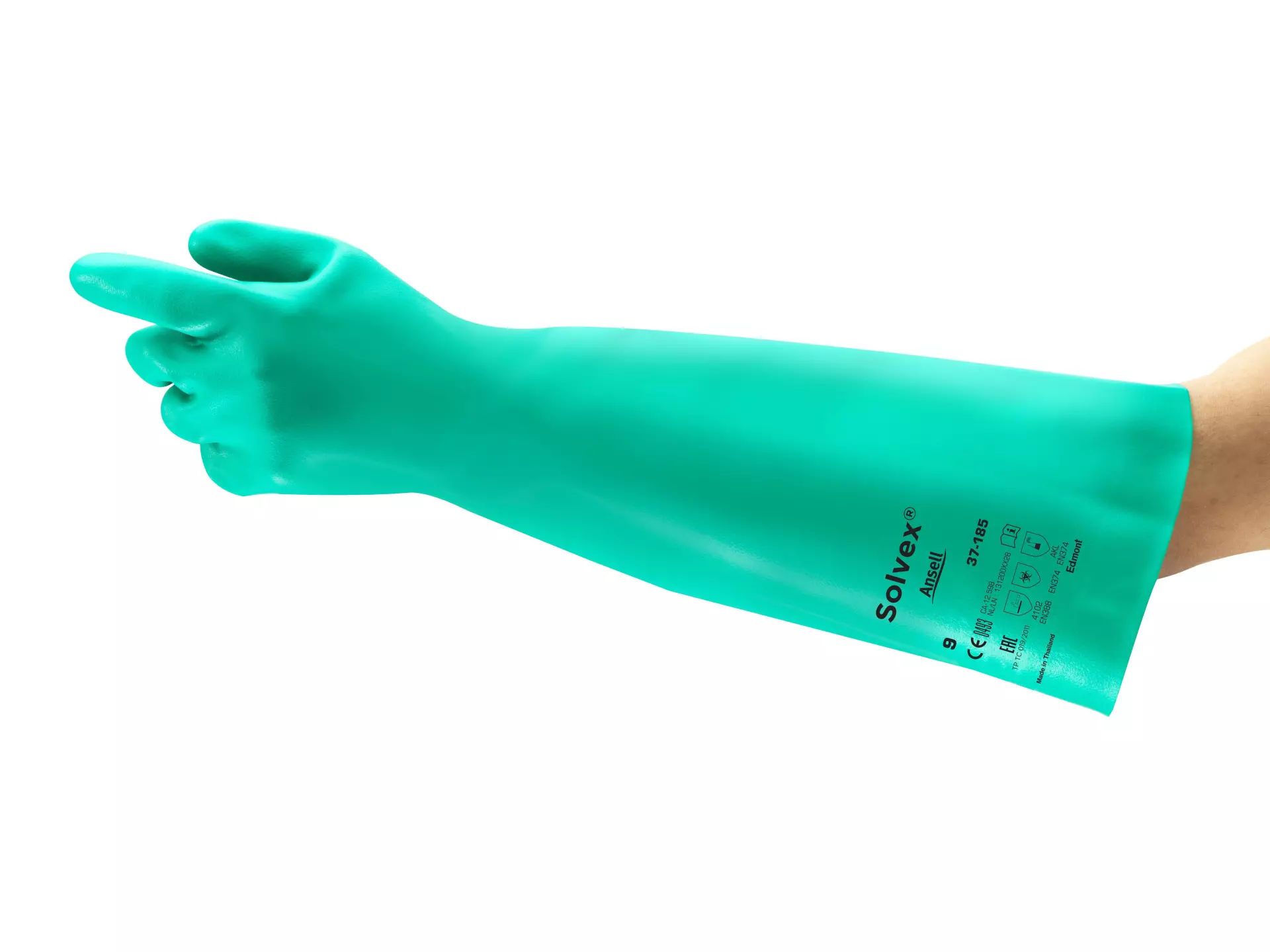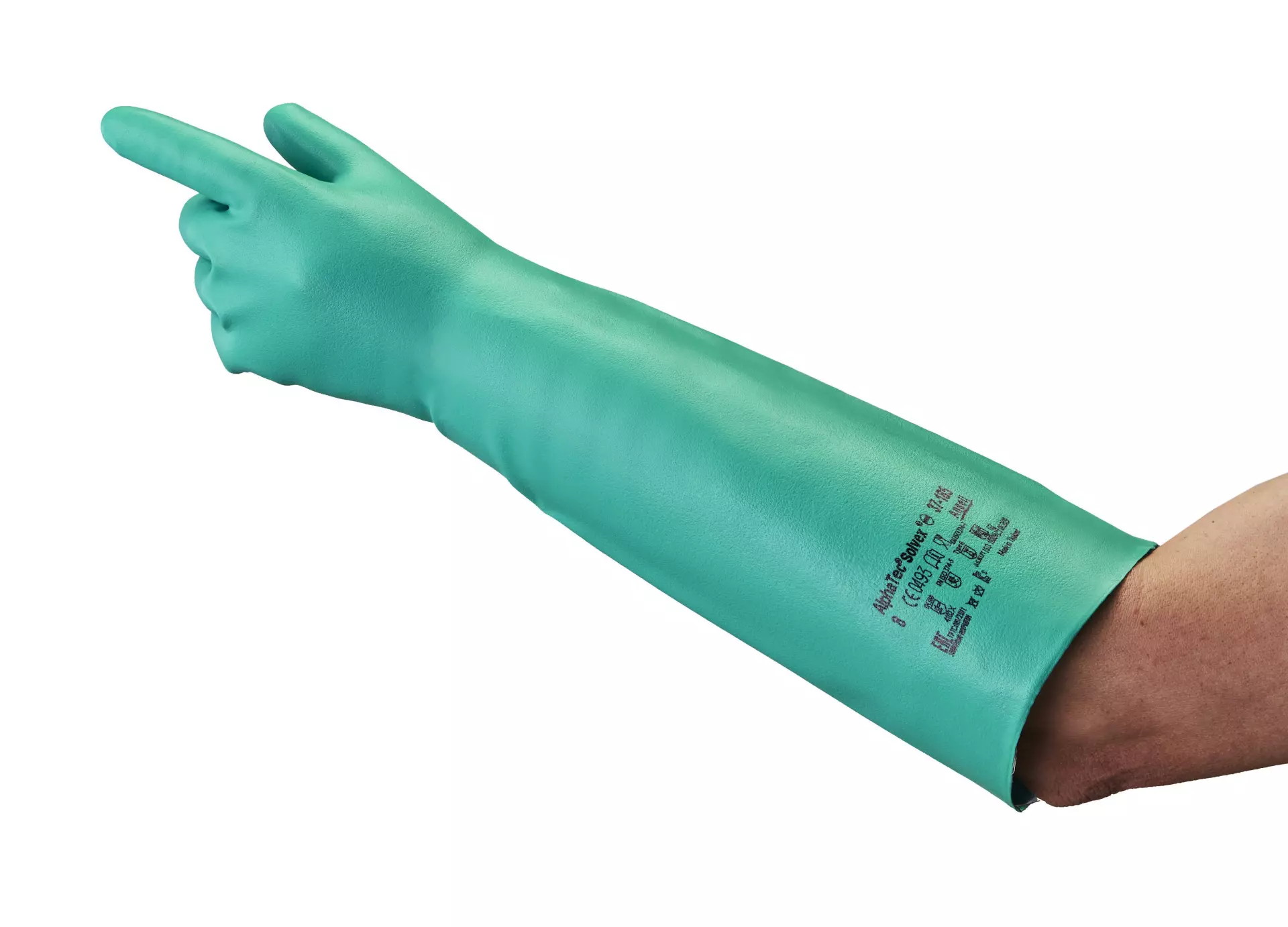AlphaTec Solvex 37-185
4.7 / 5
Product description
Description
Fewer risks: With no inner cotton flocking, AlphaTec® Solvex® 37-185 chemical-resistant gloves present lower lint contamination risks
Specialized protection: Their high-performance nitrile compound composition grants them EN 374 Type A chemical protection, shielding up to the elbow
Improved durability: This nitrile make-up also ensures EN and ANSI level 4 abrasion protection, making them suitable for heavy-duty cleaning
Elevated comfort: AlphaTec® Solvex® 37-185 industrial gloves are also highly comfortable and dexterous
Food handling compliance: They comply with both EU and FDA regulations for food handling
Recommended for
All food processing applications that have food contact
Forging operations
General pumping work
Handling incoming goods
Filling, blending and charging of raw materials
Opening and draining pumps valves or lines
Loading and unloading of proces equipment
Transferring liquids and solids between vessels and tanks and process equipment
Supervision of running operation
Handling outgoing goods: cans, vessels, bulkpack and cartons
Testing
Opening furnaces draining pumps valves or lines and crackers BTX process
Painting or cleaning tools or robots
Product Details
Antistatic : Yes En1149
Available Sizes : 7, 8, 9, 10, 11
Chlorinated : Yes
Coating Color : Green
Coating Material : Nitrile
Construction : Unsupported
Cuff Style : Gauntlet
Grip Design : Sandpatch
Latex Free : Yes
Silicone Free : Yes
Length (Mm/Inches) : 457 / 18
Palm Thickness (Mm/Mil) : 0.56 / 22
About Reusable Nitrile Gloves
Reusable Nitrile Gloves offer superior chemical resistance and durability for industrial, laboratory, and food handling tasks. Made from synthetic rubber, these latex-free gloves provide excellent grip and tactile sensitivity while protecting hands from chemicals, oils, and punctures through multiple uses.
- Chemical Resistance
- Cut Resistant
- Food Service
- Electrical Protection
- Antimicrobial Protection
- Hand Protection
Standards and labels
Ansell delivery terms
Free delivery when you order more than 150,00 € from Ansell
Supplier shipping fee 4,74 €
Brand minimum 1 000,00 €
68,64 €
Price per 12 packages (12 pairs)
5,72 € / pair
Shipping fee is 4,74 € for orders under 150,00 €
A carton contains 12 packages (12 pairs)









